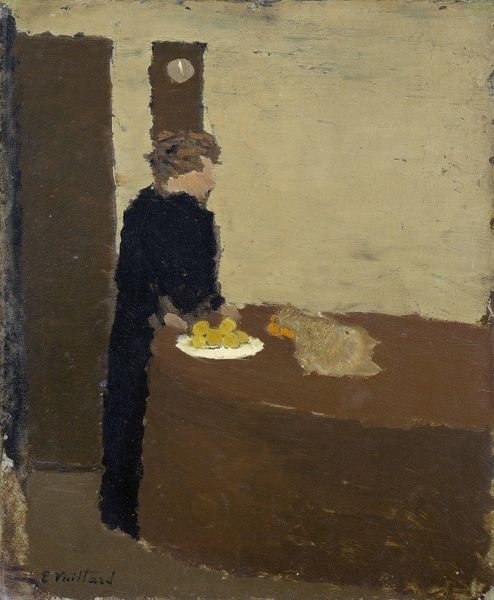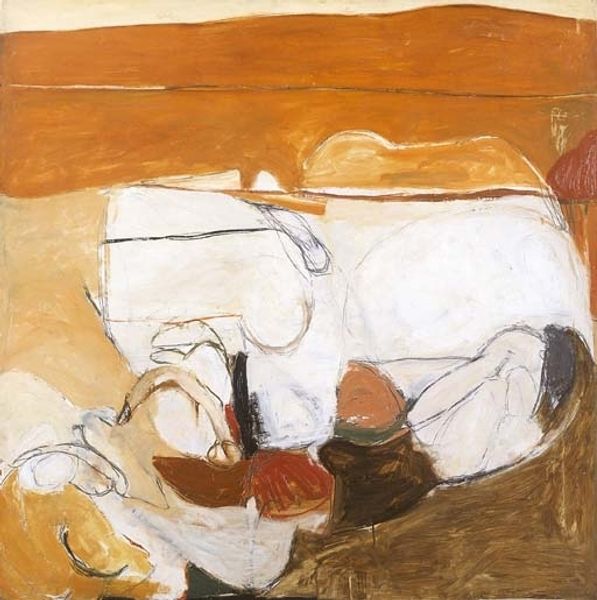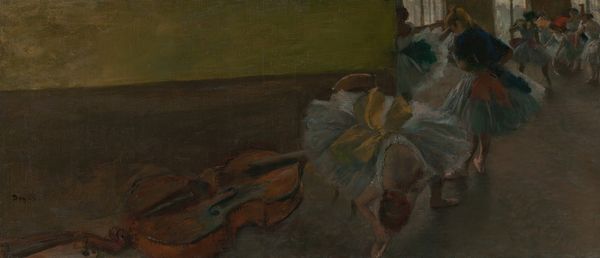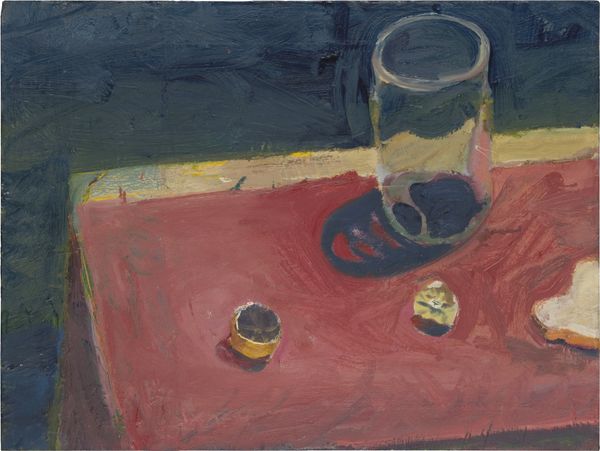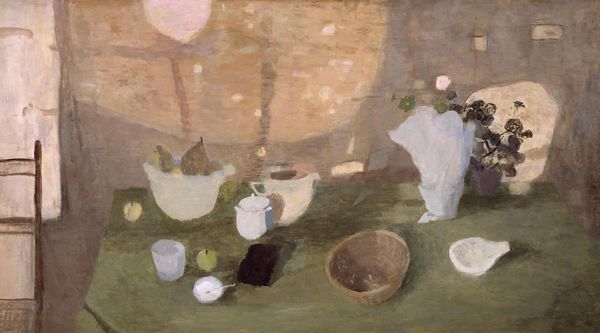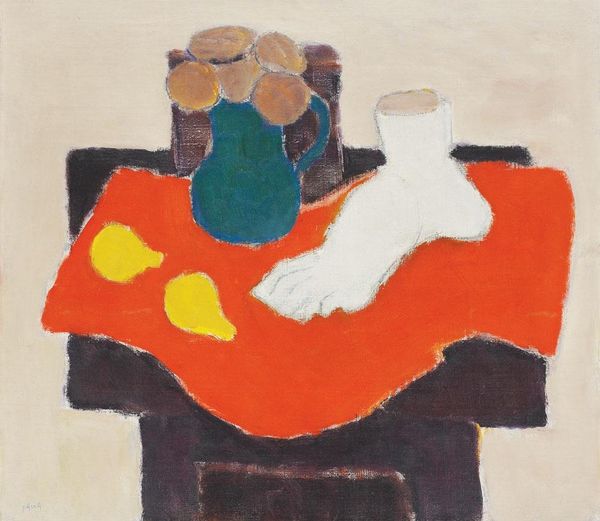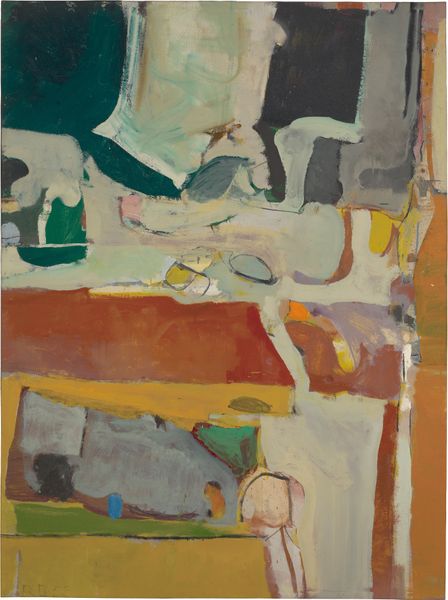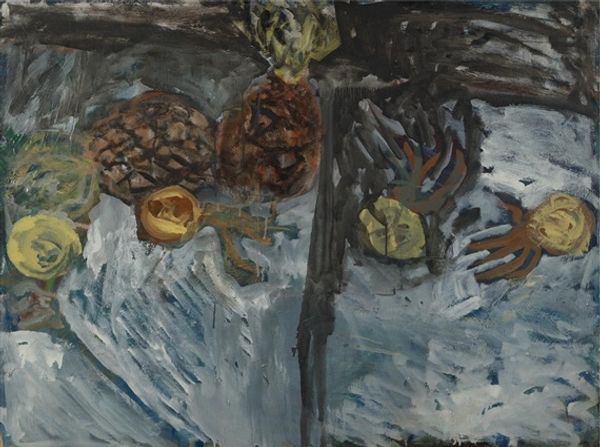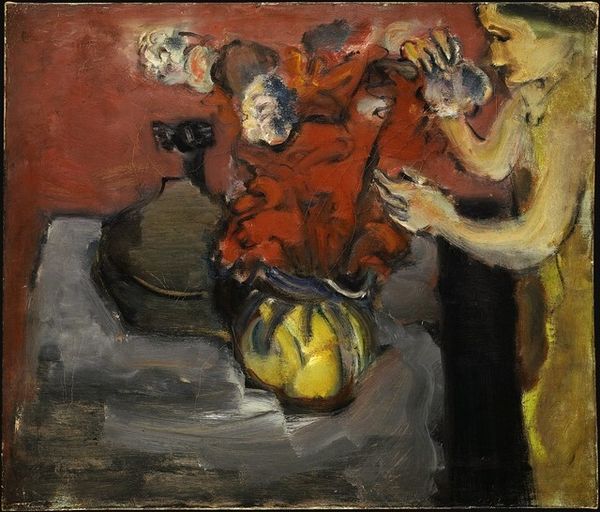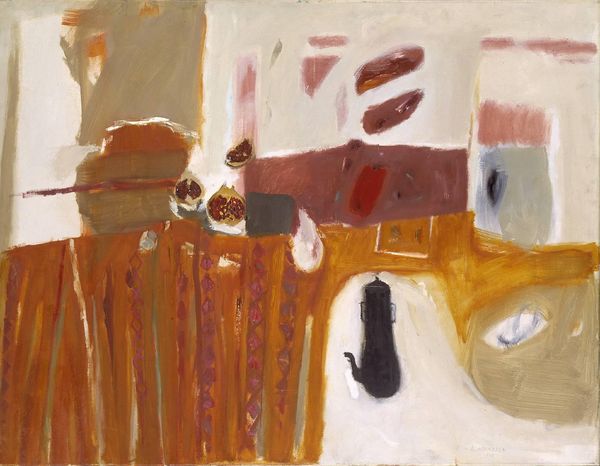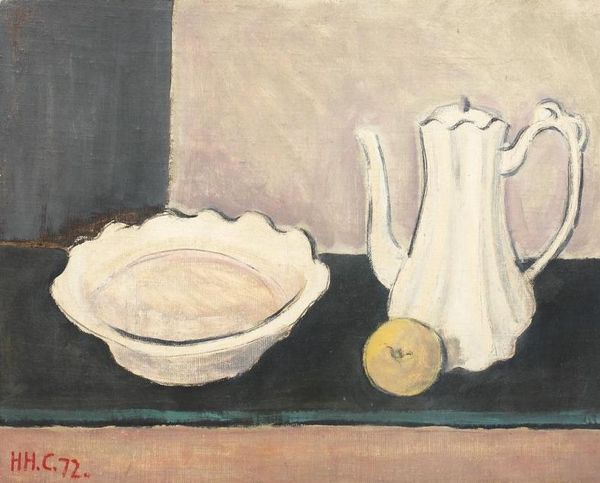
oil-paint, impasto
#
oil-paint
#
oil painting
#
impasto
#
geometric
#
modernism
Dimensions: 50 cm (height) x 65 cm (width) (Netto)
Editor: We’re looking at Immanuel Ibsen’s "Still Life with Oranges" from 1937. It's an oil painting. It's interesting how the oranges really pop against the muted background. The texture also looks quite thick. What catches your eye about this piece? Curator: What I see is a careful construction of color and form during a very specific moment in history. Look at the geometric shapes that form the basis of the composition. Consider that 1937 was a period of rising political tensions in Europe. The perceived solidity and order of the still life, the comfort of the domestic scene, becomes an interesting contrast with the looming anxieties of the time. Does the impasto contribute to this, in your opinion? Editor: Definitely. The impasto adds a sense of urgency to something normally considered quite serene. So you're suggesting that this seemingly simple painting actually engages with a lot of the sociopolitical concerns of its time? Curator: Exactly! The politics of imagery were shifting, and even in still life, artists subtly reflected or resisted prevailing moods. It’s a negotiation between personal expression and the pressures of external events. How does knowing the historical context change your initial perception of the painting? Editor: It makes me see it as less of a simple scene, and more as an intentional commentary on order versus the fear of chaos at that time. It definitely deepens the reading. Curator: Indeed. The museum then acts as a mediator, enabling a dialogue between art and its public. It is a way of framing what art means, even decades after it was made. Editor: I’ll definitely be more conscious of historical context when looking at art from now on. Curator: A perfect takeaway from this viewing, I'd say!
Comments
No comments
Be the first to comment and join the conversation on the ultimate creative platform.
